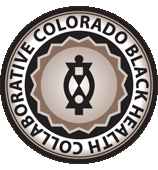Lonnie G. Johnson
Who Is Lonnie G. Johnson?
African American engineer and inventor Lonnie G. Johnson earned his master’s degree in nuclear engineering from Tuskegee University and went on to work for the U.S. Air Force and the NASA space program. After tinkering with the invention of a high-powered water gun, Johnson’s Super Soaker became a top-selling item by the early 1990s. He has since been developing the Johnson Thermoelectric Energy Converter (JTEC), an engine that converts heat directly into electricity, which Johnson’s sees as the path to low-cost solar power.
Early Life, Family and Education
Lonnie George Johnson was born on October 6, 1949, in Mobile, Alabama. His father was a World War II veteran who worked as a civilian driver at nearby Air Force bases, while his mother worked in a laundry and as a nurse’s aid. During the summers, both of Johnson’s parents also picked cotton on his grandfather’s farm.
Out of both interest and economic necessity, Johnson’s father was a skilled handyman who taught his six children to build their own toys. When Johnson was still a small boy, he and his dad built a pressurized chinaberry shooter out of bamboo shoots. At the age of 13, Johnson attached a lawnmower engine to a go-kart he built from junkyard scraps and raced it along the highway until the police pulled him over.
Johnson dreamed of becoming a famous inventor and, during his teenage years, began to grow more curious about the way things worked and more ambitious in his experimentation—sometimes to the detriment of his family. “Lonnie tore up his sister’s baby doll to see what made the eyes close,” his mother later recalled. Another time, he nearly burned the house down when he attempted to cook up rocket fuel in one of his mother’s saucepans and the concoction exploded.
Growing up in Mobile in the days of legal segregation, Johnson attended Williamson High School, an all-black facility, where, despite his precocious intelligence and creativity, he was told not to aspire beyond a career as a technician. Nevertheless, inspired by the story of famed African American inventor George Washington Carver, Johnson persevered in his dream of becoming an inventor.
Nicknamed “The Professor” by his high school buddies, Johnson represented his school at a 1968 science fair sponsored by the Junior Engineering Technical Society (JETS). The fair took place at the University of Alabama at Tuscaloosa, where, just five years earlier, Governor George Wallace had tried to prevent two black students from enrolling at the school by standing in the doorway of the auditorium.
he only black student in the competition, Johnson debuted a compressed-air-powered robot, called “the Linex,” that he had painstakingly built from junkyard scraps over the course of a year. Much to the chagrin of the university officials, Johnson won first prize. “The only thing anybody from the university said to us during the entire competition,” Johnson later recalled, “was ‘Goodbye’ and ‘Y’all drive safe, now.'”
After graduating with Williamson’s last segregated class, in 1969, Johnson attended Tuskegee University on a scholarship. He earned a bachelor’s degree in mechanical engineering in 1973, and two years later he received a master’s degree in nuclear engineering from the school.
Inventions
The Super Soaker
Johnson went on to join the U.S. Air Force, becoming an important member of the government scientific establishment. He was assigned to the Strategic Air Command, where he helped develop the stealth bomber program. Johnson moved on to NASA’s Jet Propulsion Laboratory in 1979, working as a systems engineer for the Galileo mission to Jupiter and the Cassini mission to Saturn, before returning to the Air Force in 1982.
Despite his busy days, Johnson continued to pursue his own inventions in his spare time. One of his longtime pet projects was an environmentally friendly heat pump that used water instead of Freon. Johnson finally completed a prototype one night in 1982 and decided to test it in his bathroom. He aimed the nozzle into his bathtub, pulled the lever and blasted a powerful stream of water straight into the tub. Johnson’s instantaneous and instinctive reaction, since shared by millions of kids around the world, was pure delight.
In 1989, after another seven years of tinkering and tireless sales-pitching, during which he left the Air Force to go into business for himself, Johnson finally sold his device to the Larami Corporation. The “Power Drencher” initially failed to make much of a commercial impact, but after additional marketing efforts and a name change, the “Super Soaker” became a massively successful item. It topped $200 million in sales in 1991, and went on to annually rank among the world’s Top 20 best-selling toys.
The Johnson Thermoelectric Energy Converter
Propelled by the success of the Super Soaker, Johnson founded Johnson Research & Development and went on to acquire dozens of patents. Some of his inventions, including a ceramic battery and hair rollers that set without heat, achieved commercial success. Others, including a diaper that plays a nursery rhyme when soiled, failed to catch on. Another invention sought to address matters of far greater importance: With the creation of the Johnson Thermoelectric Energy Converter (JTEC), the engineer aimed to develop an advanced heat engine that could convert solar energy into electricity with twice the efficiency of existing methods. He believed a successful version of the JTEC had the potential to make solar power competitive with coal, fulfilling the dream of efficient, renewable solar energy.
Personal Life
Johnson and his wife, Linda Moore, have four children. They live in the Ansley Park neighborhood of Atlanta, Georgia.



